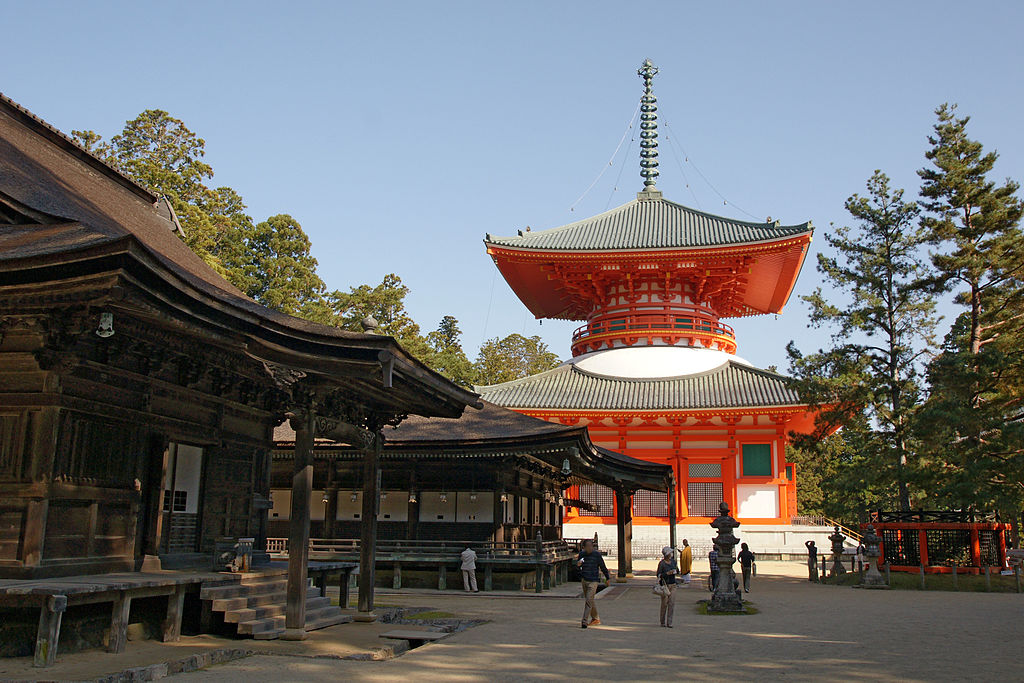Apr 28, 2023
Exploring the Sacred Mountains of Kansai
Mountains are sacred places in many cultures for reasons ranging from the inspirational views from the summits and their impressive heights (which are said to reach the heavens) to the fact they are often a source of water and, therefore, life. Japan has several sacred mountains, three of which are in Kansai.
Hieizan
Next to Lake Biwa (the largest lake in the country) is Mount Hiei, also called Hieizan. The most important site on the mountain is Enryakuji Temple, the headquarters of the Tendai sect of Buddhism. The temple dates back around 1,200 years. It was built by a monk called Saicho, who brought the Tendai form of Buddhism to Japan from China. Many monks came to study at Enryakuji and subsequently established their own sects. Saicho also introduced tea plants to Japan and espoused the benefits of drinking green tea.
Today, the Enryakuji Temple is divided into three areas linked by walking trails (although you can also take buses to travel between them). In the past, the temple grounds were much more extensive, and there were thousands of smaller temples, but these have since been destroyed.
You can reach Hieizan from Kyoto by taking the Keihan Railway. If you’d prefer not to hike up the mountain, you can take one of two cable cars or the ropeway.
https://goo.gl/maps/93kL16GPMHmEM2Qc7
Koyasan
Close to Osaka is Mount Koya, or Koyasan, reachable via the Nankai Railway. It is the headquarters of one of the largest Buddhist sects in Japan: Shingon. The sect dates back to 806 when it was introduced to the country by Kobo Daishi.
In addition to the main temple on the top of the mountain and several smaller temples, Koyasan has the largest cemetery in the country. This is the resting place of Kobo Daishi, who is said to be in eternal meditation in his mausoleum. The cemetery grew so large because his followers wanted to remain near him.
There’s plenty to do at Koyasan, particularly if you want to walk several hiking trails. If you stay overnight, you can participate in many activities of temple life, including various rituals, meals with monks (all the food is vegetarian), meditation, and copying sutra.
https://goo.gl/maps/VMzJxJE8AW7RN7AdA
Yoshinoyama
A second sacred mountain near Osaka is Mount Yoshino, also called Yoshinoyama. However, unlike the other two mountains, it is not sacred in Buddhism but in Shugendo, which has elements of Shinto mountain worship and both Tendai and Shingon Buddhism.
After taking the Kintetsu Railway to Yoshino station, you take the ropeway from the town to the top of the mountain. At the summit, you can walk the easy trails for regular visitors or even venture the trails for ascetic practitioners. Whichever you take, you’ll encounter numerous temples. The town center also has several attractions, including restaurants serving local cuisine like kakinohazushi (sushi preserved in persimmon leaf) and kuzu (Japanese arrowroot).
If possible, you should try to hike up the mountains from their nearest towns, using the trails pilgrims have used for centuries. In addition, take advantage of the option to stay overnight when you reach the summit to gain the full experience.
https://goo.gl/maps/5dnj9mrMqfWhPtFg6
663highland, CC BY-SA 3.0, via Wikimedia Commons


About the author